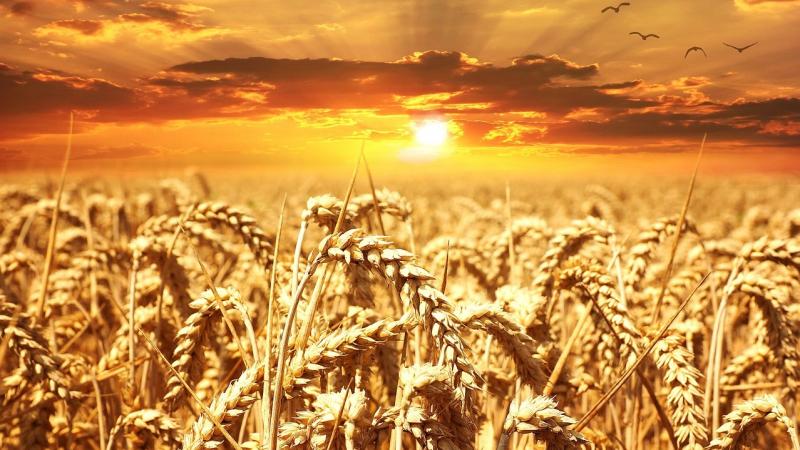
200 scientists, 73 research institutions, 20 countries and 13 years—this is what it took to complete a task that was once deemed implausible. Yes, it is the herculean task of sequencing the genome of the bread wheat (Triticum aestivum)—a grain that is used every day to prepare rotis, parathas and everything in between. In a recent study spearheaded by the International Wheat Genome Sequencing Consortium (IWGSC), researchers have reported the completion of sequencing the entire wheat genome.
Genome sequencing is the method of finding out the order of nucleotides bases which forms the DNA-the fundamental unit of all life-forms. It is made up of four repeating unit- Adenine, Guanine, Thymine and Cytosine. Scientists and farmers can now use this valuable information produced from wheat genome to increase the productivity of the grain on the existing but ever-depleting cultivable land without hurting the biodiversity and environment and using limited water and nutrients.
Wheat is one of the most important food crops in the world and is the staple diet of more than a third of the world's population. Yet, its genome was not fully understood until recently. The first draft of the genome sequence was published in 2014, and four years later, we now have a full reference genome with a far-reaching impact on the scientific research, plant breeders and global population.
What is the complexity of this task, considering even the human genome is already sequenced, you ask? Well, it is the size and structure of the wheat genome! The wheat genome is huge—more than five times the human genome and 35 times that of rice! It has 21 chromosomes originating from three highly similar smaller-genomes (A, B, and D), each of which is larger than the human genome, and contains seven chromosomes. To those unaware, the human genome is 3.3 billion nucleotide base pairs, while the wheat genome is 16 billion nucleotide base pairs!
The highly repetitive elements of the wheat genome add to its complexity—more than 85% of the genome is made up of repeat elements, and only 2% represents genes. Repetitive elements, which are patterns of nucleic acids present in several copies, are characteristics of most genomes. Hence, assembling a genome as huge as wheat, using small sequences called as reads, derived from sequencing machines, is an uphill task. The closest analogy of reads and its assembly could be a jigsaw puzzle with many pieces that are similar in shape and size, making it harder to assemble into a meaningful picture.
The scientists in the consortium tried to solve the above problem by following the same approach used in sequencing the genomes of other organisms like the mouse, human or rice. They reduced the complexity of the genome by sequencing each chromosome separately, and the end product was a near-perfect genome that can be used by scientists and breeders. With 94% of the genome covered, it is by far the best reference genome of wheat available till date. The study presents the location of 107,891 genes (compare this with only 20,000 genes in humans) and more than 4 million genetic markers—fragments of DNA in specific places and necessary for particular traits. It also presents the regulatory elements that would control gene expression—all handy tools for future research on wheat.
There was also a significant Indian contribution to this colossal effort, with 18 scientists from three institutes, led by Dr Kuldeep Singh from the Punjab Agricultural University, Ludhiana who is also the Director at ICAR-National Bureau of Plant Genetic Resources, Prof. Nagendra Singh at ICAR-National Research Centre on Plant Biotechnology, New Delhi, and Prof. JP Khurana from the University of Delhi. They were tasked with the sequencing of the 2A chromosome, which constitutes 5% of the wheat genome. The Department of Biotechnology, Government of India, supported the research on the Indian side.
India, the second largest producer of wheat after China, with production crossing 98 million tons in 2017-2018, is poised to make the best use of the genome information. With its population marching towards 1.6 billion by 2050, and the world population set to rise to 9.6 billion, the productivity of wheat has to increase by 1.6% annually to feed this ever-growing demand, notes IWGSC. Tuning the right gene to do this holds the key.
In addition to food security, there is also a need for developing wheat varieties that can stand the test of the changing climate. Using the information of the genome sequencing, scientists can develop high-yielding varieties of wheat that also has better resistance to environmental stresses and pathogen attacks. If you are allergic to gluten, the study may be good news to you since allergies associated with wheat-derived gluten could be mitigated by targeting the genes that might contribute to it.
The scientists behind the research hope that wheat genome sequencing could open up several possibilities to breeders and farmers, as it did when maize and rice genome were sequenced in 2009 and 2005 respectively. Coupled with gene editing technologies like CRISPR-Cas9, this breakthrough could change the future of wheat research for better. Although the cloud of scepticism over genetically modified plants persists, the availability of a high-quality reference genome of wheat is indeed a first step forward towards addressing the global problem of food scarcity.






